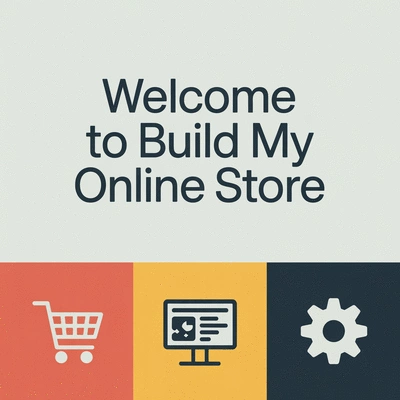Have you ever wondered what it takes to create a successful e-commerce website in Australia? As the digital landscape continues to evolve, understanding the essential elements of e-commerce design is your first step toward building a thriving online store. Let’s explore the key insights that can set you apart in this competitive market.
What You Will Learn
- The significance of first impressions in e-commerce design and how it affects conversion rates.
- Unique attributes of the Australian e-commerce landscape, including local payment methods and consumer preferences.
- Essential trust-building factors for your online store, such as SSL certificates and clear policies.
- Key user experience principles, including mobile compatibility, website speed, and accessible design.
- The importance of continuous learning and adaptation to stay competitive in the evolving e-commerce sector.
Key E-Commerce Design Factors & Principles
This visual highlights critical factors in building a trustworthy e-commerce site and essential UX principles for a seamless online experience, crucial for Australian beginners.
Key Factors in Building Trustworthiness
- ✓ SSL Certificates: Secure website.
- ✓ Clear Policies: Transparent return & privacy.
- ✓ Customer Reviews: Positive testimonials.
Essential UX Principles
- ★ Mobile Compatibility: Responsive design.
- ★ Website Speed: Fast-loading pages.
- ★ Accessible Design: Easy navigation for all.
Key Trust-Building Strategies
- ✓ Use SSL Certificates: Boost confidence.
- ✓ Be Transparent: Clear pricing & policies.
- ✓ Social Proof: Display testimonials.
- ✓ Optimize Navigation: User-friendly paths.
- ✓ Streamline Checkout: Reduce abandonment.
Recommended Analytics Tools
- ● Google Analytics: Track user activity.
- ● Hotjar: Heatmaps & recordings.
- ● Crazy Egg: Visualize clicks & navigation.
Understanding E-Commerce Website Design for Australian Beginners
Are you feeling a bit lost when it comes to e-commerce website design as a beginner? You're in the right place! Designing an effective online store is crucial for success, especially in today's fast-paced digital world. In this section, we’ll explore why good design matters, the unique landscape of Australian e-commerce, and how to build trust with your customers. Ready? Let’s dive in!
Why E-Commerce Design Matters in 2025
As we step into 2025, the importance of e-commerce design can't be overstated. With more businesses entering the online market, standing out is essential. A well-thought-out design can significantly impact your conversion rates. Customers are drawn to visually appealing stores that are easy to navigate and trustworthy. Research suggests that a positive user experience, often facilitated by good design, is crucial for retaining customers and driving sales. Learn more about usability guidelines for e-commerce website design in this comprehensive review.
- First impressions are critical; your design needs to capture attention quickly.
- Mobile usability is a must, as more shoppers are using phones and tablets.
- Effective design fosters a positive user experience, encouraging repeat visits.
By focusing on these elements, you can set your online store up for a bright future in the competitive landscape of e-commerce.
The Unique Landscape of Australian E-Commerce
Australia's e-commerce market is unlike any other. With a distinct mix of consumer preferences and regulatory requirements, understanding this landscape is key. Here are some factors that make Australian e-commerce unique:
- A diverse customer base with varying shopping habits.
- Local payment methods like Afterpay and Zip Pay that are gaining traction.
- Strict compliance with Australian Consumer Law to ensure fair trading.
Recognizing these factors will help you tailor your store to better meet the needs of Australian consumers and build a loyal customer base!
Key Factors in Building Trustworthiness in E-Commerce
Building trust is essential for any e-commerce site, especially when you're just starting out. Here are some vital factors that contribute to a trustworthy online presence:
- SSL Certificates: Ensuring your website is secure can reassure customers.
- Clear Policies: Transparent return and privacy policies help build confidence. For further insights into building customer trust, refer to studies on factors influencing online consumer trust.
- Customer Reviews: Positive testimonials can significantly influence buying decisions.
By implementing these strategies, you’ll not only attract customers but also create a loyal community around your brand at Build My Online Store.
Pro Tip
When designing your e-commerce site, don’t underestimate the power of high-quality images. Research shows that products with high-resolution images can increase conversion rates by up to 40%. Invest in professional photography or learn how to take stunning product photos yourself to make your offerings more appealing!
Summarizing Key E-Commerce Design Tips for Beginners
As we wrap up our exploration of effective e-commerce design, it’s essential to highlight the key strategies that can help you build trust with your customers. Remember, your design choices not only reflect your brand but also influence the overall user experience. Here’s a recap of the most important trust-building strategies and UX principles:
- Use SSL Certificates: Ensure your website is secure by implementing SSL certificates. This simple step increases customer confidence.
- Be Transparent: Clearly communicate your pricing and policies to avoid surprises that could deter potential buyers.
- Incorporate Social Proof: Display testimonials and reviews prominently to showcase satisfied customers and build trust.
- Optimize Navigation: Easy-to-use navigation helps users find what they need without frustration.
- Streamline Checkout: Minimize steps in the checkout process to reduce cart abandonment rates.
Adopting these strategies will set the foundation for a successful e-commerce site. Trust is crucial in building long-term customer relationships, and it often starts with a well-designed website!
Recap of Trust-Building Strategies and UX Principles
Alongside the trust-building strategies, let’s not forget about the essential UX principles that enhance user satisfaction. A seamless experience keeps customers engaged and encourages them to return. Here are some key UX principles to remember:
- Mobile Compatibility: Ensure your site is responsive and looks great on all devices.
- Website Speed: Fast-loading pages prevent users from leaving before they even see your offerings.
- Accessible Design: Make sure all users can navigate and interact with your site effortlessly. For more detailed insights on enhancing the user experience, explore e-commerce user experience reports from industry leaders.
Implementing these UX principles creates an inviting atmosphere that can significantly influence a customer’s decision to purchase.
The Importance of Continuous Learning and Adaptation in E-Commerce
As the e-commerce landscape evolves, it’s vital to stay informed about the latest trends and best practices. Continuous learning is key to staying competitive. This means regularly updating your site based on new insights or customer feedback. Some strategies for ongoing improvement include:
- Follow Industry Trends: Keep an eye on emerging e-commerce trends to stay relevant.
- Engage with Users: Solicit feedback from customers to identify areas of improvement.
- Test & Iterate: Use A/B testing to determine what designs or approaches work best for your audience.
By embracing a mindset of adaptation and learning, you can ensure your e-commerce store remains effective and appealing to your target audience.
Utilizing Analytics Tools to Drive Conversion Rate Improvements
Analytics tools are invaluable for understanding user behavior and improving conversion rates. They provide insights that allow you to make data-driven decisions. Here are some popular analytics tools that can help you enhance your e-commerce strategy:
- Google Analytics: Track user activity and identify popular products.
- Hotjar: Understand how users interact with your site through heatmaps and recordings.
- Crazy Egg: Visualize where users click and how they navigate your site.
By leveraging these tools, you can continuously refine your strategies and ultimately drive more conversions for your online store!
Next Steps for Aspiring Australian E-Commerce Entrepreneurs
Now that you have a solid foundation in e-commerce design and user experience, it’s time to take the next steps towards launching your online store. Start by creating a personalized action plan based on your specific goals and resources. Here’s how you can begin:
Creating a Personalized Action Plan Based on Your Goals
To kick off your action plan, consider what you aim to achieve with your e-commerce site. Here are some steps to guide you:
- Set Clear Objectives: Define what success looks like for your business.
- Identify Your Target Market: Understand who your ideal customers are and how to reach them.
- Create a Timeline: Set milestones to keep you on track as you develop your store.
Having a structured plan will make your journey much more manageable and focused!
Resources and Tools for Further Learning and Development
As you navigate the world of e-commerce, a variety of resources can help you stay informed and improve your skills. Here are some suggestions:
- Online Courses: Platforms like Udemy and Coursera offer e-commerce-focused courses.
- E-Commerce Blogs: Follow blogs like Build My Online Store for ongoing insights and tips!
- Webinars and Workshops: Attend events to learn from industry experts and network.
Utilizing these resources will empower you with knowledge and skills necessary for your e-commerce success.
Exploring E-Commerce Platforms Compatible with Australian Markets
Finally, choosing the right e-commerce platform is crucial for your online business. Here are some platforms that cater specifically to the Australian market:
- Shopify: Known for its ease of use and robust features.
- WooCommerce: A flexible option for WordPress users.
- BigCommerce: Offers a comprehensive solution for growing brands.
Each platform has its unique strengths, so take the time to explore which one aligns best with your business needs. With the right tools and knowledge, you’ll be well on your way to building a successful e-commerce store!
Frequently Asked Questions About E-Commerce Website Design
- Q: Why is e-commerce design so important for Australian online stores?
- A: Good e-commerce design is crucial for several reasons: it creates a positive first impression, improves conversion rates, enhances user experience, and helps your store stand out in a competitive market. It directly influences customer trust and encourages repeat visits.
- Q: What makes the Australian e-commerce market unique?
- A: The Australian market is unique due to its diverse customer base, the popularity of local payment methods like Afterpay and Zip Pay, and the strict compliance requirements of Australian Consumer Law. Tailoring your design to these factors is key for success.
- Q: What are the essential factors for building trust in an e-commerce website?
- A: Key factors for building trust include using SSL certificates for website security, providing clear and transparent return and privacy policies, and showcasing positive customer reviews and testimonials.
- Q: What are the most important user experience (UX) principles for an e-commerce site?
- A: Essential UX principles include ensuring mobile compatibility (responsive design), optimizing website speed for fast-loading pages, and implementing accessible design so all users can navigate and interact with your site easily.
- Q: How can analytics tools help improve my e-commerce business?
- A: Analytics tools like Google Analytics, Hotjar, and Crazy Egg are invaluable for understanding user behavior. They help you track activity, visualize clicks, identify popular products, and make data-driven decisions to refine your strategies and improve conversion rates.
Recap of Key Points
Here is a quick recap of the important points discussed in the article:
- Importance of E-Commerce Design: A visually appealing and user-friendly design can significantly boost conversion rates.
- Understanding the Australian Market: Tailor your store to meet local preferences and comply with Australian Consumer Law.
- Building Trust: Implement SSL certificates, clear policies, and showcase customer reviews to foster trust.
- User Experience Principles: Optimize navigation, ensure mobile compatibility, and enhance website speed for better user engagement.
- Continuous Learning: Stay updated with industry trends and customer feedback to refine your e-commerce strategies.
- Utilizing Analytics: Leverage tools like Google Analytics to track user behavior and improve conversion rates.










